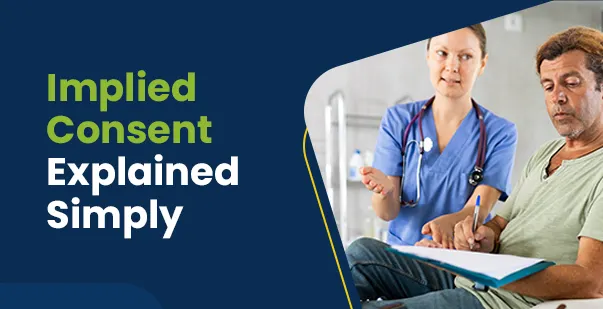Table of Contents
- Introduction
- What Is Implied Consent?
- When Does Implied Consent Apply?
- Legal Basis of Implied Consent
- Ethical Dilemmas and Challenges in Using Implied Consent
- Implied Consent for Minors in Emergencies
- Differences Between Implied Consent and Other Consent Types
- Best Practices For Implied Consent in Emergency Care
- Implied Consent in Emergency Healthcare: A Critical Lifesaver
In a life-or-death emergency, every second counts, but what happens when a patient can’t give consent? Emergencies demand swift action, leaving no room for hesitation. When a patient’s life hangs in the balance, and they cannot provide consent, healthcare providers rely on implied consent to deliver life-saving care.
The legal and ethical principle helps medical professionals to act decisively in serious moments and prioritize the patient’s well-being above all else. Implied consent ensures transparency, builds trust, and highlights the importance of rapid decision-making during emergencies. This blog will cover what implied consent is, along with its applications in emergencies, legal and ethical considerations and its importance in ensuring timely and life-saving medical care.
What Is Implied Consent?
Implied consent definition means permission is assumed based on the circumstances, even if it is not directly stated. It is often used when a person is unconscious or unable to communicate. Healthcare providers assume the patient would agree to treatment if they could.
For example, in emergencies like heart attacks or accidents, implied consent allows doctors to act without waiting for verbal or written permission. Moreover, the legal and ethical principle ensures patients receive the care they need without unnecessary delays. It prioritizes life-saving actions when a patient’s life or health is at immediate risk. To understand this better it’s essential to examine what is an implied consent law, which provides the legal framework for these critical decisions.
When Does Implied Consent Apply?
Implied consent applies when a person’s actions or circumstances suggest they agree to something, even without directly saying so. This often happens in emergency medical care, daily interactions, or legal situations where spoken or written consent isn’t practical.
During Emergency Medical Treatment
If someone is unconscious or unable to speak and needs urgent care, doctors can treat them without permission. It’s assumed the person would want help to save their life or prevent serious harm. This helps avoid delays in life-saving care.
In Doctor-Patient Interactions
When a patient shows up for a check-up and follows instructions, consent is usually implied. For example, rolling up a sleeve for a blood test suggests they agree. No signature is needed because their actions clearly show approval for routine procedures.
Urgent Care Needs
Implied consent also applies when delaying treatment could lead to serious harm or death. In such cases, quick action is more important than obtaining permission.
For instance, a person having a heart attack may need urgent procedures like CPR or defibrillation, even if they cannot communicate their approval.
In Everyday Situations
Implied consent also works in normal life. If someone holds out their arm at a security check, it shows they agree to a pat-down. Their body language or cooperation makes it clear they accept what’s happening, even without speaking.
Legal Basis of Implied Consent
The legal foundation for implied consent comes from both common law and state laws. Common law develops over time through court decisions rather than written legislation. These court rulings have established when implied consent can be legally recognized, especially in emergency situations.
State laws provide more specific guidelines about when implied consent applies in different circumstances. These legal frameworks try to balance the need to provide necessary treatment or services with respecting a person’s right to make their own choices.
Key Legal Cases That Shaped Implied Consent
Schloendorff v. Society of New York Hospital (1914) – Foundation of Consent Law
The Schloendorff v. Society of New York Hospital case from 1914 established the fundamental principle that patients have the right to decide what happens to their bodies. Judge Benjamin Cardozo famously wrote that every adult has the right to determine what happens to their own body. However, the case also recognized that in emergency situations where patients cannot give permission, doctors may provide treatment based on implied consent.
Matter of Dubreuil (1993) – Refusal of Care vs. State Interest in Life-Saving Treatment
The Matter of Dubreuil case from 1993 addressed the difficult balance between a person’s right to refuse medical treatment and the government’s interest in preserving life. The Florida Supreme Court examined a situation involving a Jehovah’s Witness who refused blood transfusions.
The court ultimately ruled that personal choice is important. However, it suggested that in extreme life-threatening situations where children might be left without a parent, implied consent principles might sometimes apply.
Good Samaritan Laws
Good Samaritan laws vary by state but generally protect medical professionals and laypersons who provide emergency assistance from legal liability. These laws recognize implied consent when the injured or ill person is unable to provide explicit consent but requires immediate medical intervention.
Implied Consent for Minors in Emergencies
Children lack the legal capacity to provide consent, making parental or guardian consent necessary for urgent care. However, in emergency situations, implied consent allows healthcare providers to act in the child’s best interest.
When Parents or Guardians Are Not Present
If a minor requires urgent medical care and their parent or guardian is unavailable, healthcare professionals may proceed under implied consent laws. This ensures that life-saving or necessary interventions are not delayed due to the absence of explicit parental approval.
U.S. Laws That Support This
- Emergency Medical Treatment and Labor Act (EMTALA): Requires hospitals to provide emergency care regardless of consent status.
- State-Specific Child Welfare Laws: Many states have laws allowing healthcare professionals to treat minors in emergencies without parental consent.
Special Cases
When it comes to types of medical consent, certain environments, such as schools, summer camps, and public events, operate under standing consent policies. This is where parents sign general consent forms allowing medical treatment in case of emergencies.
Read More: Heart Monitors – What Every Patient Needs to Know
Ethical Dilemmas and Challenges in Using Implied Consent
Implied consent allows emergency care without direct permission. However, using it can raise serious ethical questions. Medical teams must carefully balance the urgency to save lives with respect for patient rights, cultural values, and legal responsibilities. Some key ethical challenges include:
Risk of Violating Patient Autonomy
One of the biggest concerns is overriding a patient’s right to choose. If doctors wrongly assume a patient would agree to treatment, they may end up performing procedures the patient would not have wanted. This can lead to serious ethical and legal consequences.
Unclear Preferences in Unconscious Patients
When patients are unconscious and have no known medical history, doctors must act fast. But without knowing their preferences, there’s a risk of providing care that goes against their beliefs or prior wishes, especially if there are no advance directives or medical records.
Conflicts with Cultural or Religious Beliefs
Some patients belong to communities with strong cultural or religious beliefs about medical care. In emergencies, these beliefs may be overlooked due to time pressure. Treating someone in a way that violates their values can cause distress for both the patient and their family.
Healthcare providers must remain aware of these ethical challenges. They should always aim to respect the patient’s values and seek additional guidance when needed, especially in complex or unclear situations.
Read More: An Ultimate Guide to Cardiac Conduction System
Differences Between Implied Consent and Other Consent Types
Knowing the difference between what is implied consent and other forms of medical consent is essential, especially in emergency care. Each type of consent serves a distinct purpose and is used in specific situations. Here’s a clear look at how implied consent stands apart from others:
| Aspect | Implied Consent | Express Consent | Informed Consent |
| Definition | Consent is inferred from actions, behaviours, or circumstances rather than being explicitly stated. | Consent expressed is given clearly through direct communication, either verbally or in writing. | Consent is provided after a person has been fully informed about the risks, benefits, and alternatives. |
| Form of Communication | Non-verbal: based on actions or situational context. | Expressed consent is verbal or written and clearly articulated. | Usually verbal or written, it must include detailed information. |
| Examples | Showing a driver’s arm to a paramedic for a blood pressure check. | Signing a consent form for surgery in an express consent implied. | Agreeing to a medical procedure after being informed of potential outcomes. |
| Legal Strength | May have weaker legal standing due to ambiguity. | Strong legal standing as it is directly communicated. | Strong legal standing when all relevant information is shared. |
| Use Cases | Medical emergencies, implied permission for workplace monitoring. | Everyday agreements, contracts, or verbal approvals. | Healthcare, research participation, and clinical procedures. |
| Requirements | Requires situational interpretation to determine intent. | Requires clear communication from both parties. | Requires detailed information sharing and understanding by the consenting party. |
| Reversibility | It can be ambiguous to revoke due to a lack of documentation. | Easier to revoke as communication is clear. | Can be revoked, provided the consequences of revocation are understood. |
| Risk of Misinterpretation | High, as it depends on subjective interpretation of actions or circumstances. | Low, as consent is explicitly communicated. | Low, provided the information shared is comprehensive and accurate. |
Best Practices For Implied Consent in Emergency Care
Implied consent helps save lives during emergencies. However, using it responsibly requires proper training and communication. Healthcare teams must act quickly while respecting legal limits, patient rights, and the role of family in follow-up care.
Training for Emergency Providers
Healthcare professionals undergo specialized training to manage emergencies where implied consent is necessary. This training equips them with the knowledge and skills to make rapid, informed decisions while adhering to legal and ethical standards. Proper training also minimizes errors, improves patient outcomes, and fosters trust in the healthcare system.
Importance of Family Communication
Although treatment can begin without explicit permission, providers contact the family as soon as possible. Explaining the patient’s condition and care helps maintain trust and allows families to take part in decisions once the emergency has passed. Their involvement supports smoother recovery and ongoing care.
Implied Consent in Emergency Healthcare: A Critical Lifesaver
Implied consent is a vital principle in emergency healthcare. Moreover, it allows medical professionals to act quickly when patients cannot give consent, ensuring life-saving care. While it has limitations, implied consent protects patients and supports timely decision-making during critical moments. Thus, through legal protections, ethical practices, and public awareness, implied consent continues to play a key role in saving lives.
References:
- https://wilsonlaw.com/blog/difference-between-express-and-implied-consent/
- https://www.msdmanuals.com/professional/special-subjects/medicolegal-issues/informed-consent
- https://www.ncbi.nlm.nih.gov/books/NBK430827/







